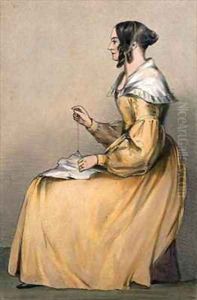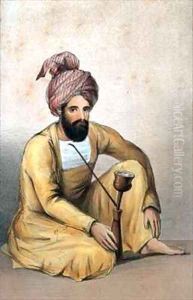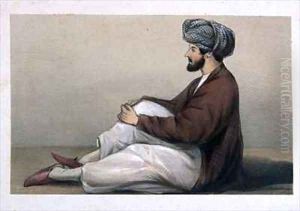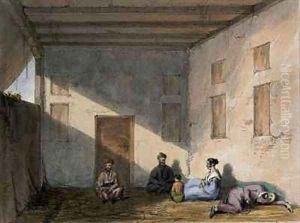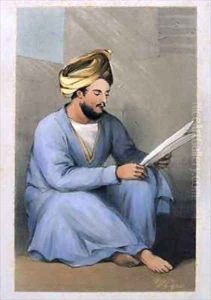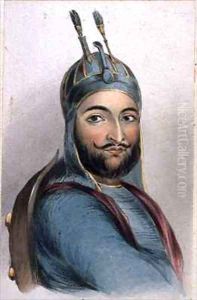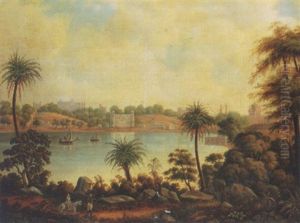Lieutenant Vincent Eyre Paintings
Lieutenant Vincent Eyre was not primarily known as an artist, but rather as a British Army officer and author. Born on August 22, 1811, in Portsdown, Hampshire, England, Eyre was educated at the Royal Military Academy, Woolwich, and commissioned into the Royal Artillery in 1829.
Vincent Eyre is most notably remembered for his involvement in the First Anglo-Afghan War (1839-1842). During the conflict, he was captured and held as a prisoner. Eyre's experiences during the disastrous retreat from Kabul and his subsequent captivity were detailed in his book, 'The Military Operations at Cabul, which Ended in the Retreat and Destruction of the British Army, January 1842. With a Journal of Imprisonment in Afghanistan,' published in 1843. The book provided a harrowing account of the events and offered a critical examination of British military operations and policy.
After his release, Eyre continued his military career and served in various capacities, including as a staff officer during the Crimean War. He was also involved in the suppression of the Indian Mutiny in 1857, where he played a significant role during the relief of Arrah.
Eyre’s contributions to military history and his written accounts are considered valuable resources for historians studying the period. His artistic endeavors, if any, were not what he was known for and did not significantly impact his historical legacy. He retired from the army with the rank of General in 1877 and passed away on October 21, 1881, in Devon, England. Though not an artist by the conventional definition, Vincent Eyre's life as a soldier and author offers a vivid glimpse into the British military campaigns of the 19th century.
